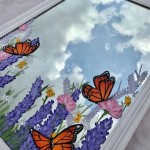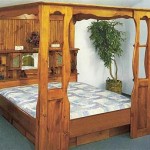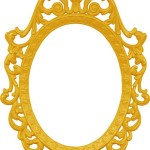Best Ways to Hang a Heavy Mirror Without Nails
Hanging a heavy mirror can be a daunting task, particularly when the goal is to avoid using nails. Nails, while effective, can cause damage to walls, especially plaster or drywall. The desire to preserve wall integrity, a reluctance to patch small holes, or simply a preference for a more renter-friendly approach often necessitates exploring alternative hanging methods. Several options exist, each with its own strengths and weaknesses, and the optimal choice depends on factors such as the weight of the mirror, the type of wall, and the desired level of permanence.
The primary challenge in hanging a heavy mirror without nails is finding a method that provides sufficient strength and stability. Traditional nails rely on shear strength and friction to hold weight, and alternatives must offer comparable or superior performance while adhering to the wall surface. Understanding the limitations of each method is crucial to ensure the mirror remains securely in place, preventing potential damage to the mirror itself or the surrounding area.
This article explores several techniques for hanging heavy mirrors without the use of nails, providing detailed information about their application, strength, and suitability for different situations. Emphasis will be placed on proper preparation and installation techniques to maximize the effectiveness of each method.
Heavy-Duty Adhesive Strips
Heavy-duty adhesive strips represent a popular and relatively simple method for hanging mirrors without nails. These strips utilize a strong adhesive on both sides: one side adheres to the wall surface, and the other to the back of the mirror. The weight capacity of these strips is typically indicated on the packaging and varies depending on the manufacturer and the specific product. It is crucial to carefully select strips that are rated for the weight of the mirror being hung, with a safety margin factored in to account for potential variations in wall surface strength or environmental conditions.
The effectiveness of adhesive strips depends heavily on proper surface preparation. The wall surface must be clean, dry, and free from dust, grease, or loose paint. Isopropyl alcohol can be used to thoroughly clean the area where the strips will be applied. Rough or textured walls may require additional preparation, such as sanding or the application of a primer. The back of the mirror should also be cleaned to ensure optimal adhesion.
Application of the strips involves carefully adhering them to the back of the mirror according to the manufacturer's instructions. This typically involves applying pressure to the strips for a specified period to ensure a strong bond. The mirror is then carefully positioned on the wall and pressed firmly against the surface. Allowing the adhesive to cure for the recommended period, usually 24-72 hours, before releasing the mirror is essential. During this curing period, it is advisable to use temporary supports, such as painter's tape or props, to hold the mirror in place and prevent it from shifting.
Despite their convenience, heavy-duty adhesive strips are not suitable for all situations. They may not adhere effectively to certain types of walls, such as textured walls or walls with loose paint. Furthermore, removing the strips can sometimes damage the wall surface, even when done carefully. It is always recommended to test a small, inconspicuous area of the wall with a strip before applying them to the entire mirror.
Construction Adhesives
Construction adhesives, also known as liquid nails, offer a more permanent and heavy-duty solution for hanging mirrors without nails. These adhesives are formulated to create a strong and durable bond between two surfaces, and they are often used in construction and renovation projects. They are available in a variety of formulations, each with its own specific properties and applications. Selecting a construction adhesive that is specifically designed for use with mirrors and drywall is essential to avoid damaging the mirror's backing or the wall surface.
Like adhesive strips, proper surface preparation is critical for the success of construction adhesives. The wall surface and the back of the mirror must be clean, dry, and free from dust, grease, and loose particles. Roughening the back of the mirror slightly with sandpaper can improve adhesion. Applying a primer to the wall surface can also enhance the bond, especially on porous or painted surfaces.
Application of construction adhesive typically involves applying a bead or series of beads to the back of the mirror. The amount of adhesive required depends on the size and weight of the mirror, as well as the specific adhesive being used. It is important to follow the manufacturer's instructions carefully to avoid applying too much or too little adhesive. Once the adhesive has been applied, the mirror is carefully positioned on the wall and pressed firmly into place.
Because construction adhesives create a very strong and permanent bond, it is essential to ensure that the mirror is properly aligned before the adhesive cures. Using temporary supports, such as shims or props, can help to hold the mirror in place while the adhesive sets. The curing time for construction adhesives varies depending on the product, but it is typically 24-72 hours. During this time, it is important to avoid disturbing the mirror. Removal of a mirror attached with construction adhesive is typically a difficult and destructive process, often resulting in damage to both the mirror and the wall.
Hanging Systems Designed for Heavy Items
Specifically designed hanging systems provide a more robust and versatile alternative to adhesive strips and construction adhesives. These systems typically consist of two interlocking components: one component is attached to the wall, and the other to the back of the mirror. The two components then interlock, providing a secure and weight-bearing connection. These systems are available in a variety of designs, including interlocking brackets, French cleats, and hook-and-loop fasteners.
Interlocking brackets consist of two metal brackets that fit together to create a secure connection. One bracket is attached to the wall using screws or anchors, and the other is attached to the back of the mirror. The mirror is then lifted and the two brackets are interlocked. This type of system provides a strong and stable support for heavy mirrors.
French cleats consist of two beveled pieces of wood or metal that interlock. One cleat is attached to the wall with the beveled edge facing upwards, and the other cleat is attached to the back of the mirror with the beveled edge facing downwards. The mirror is then lowered onto the wall cleat, and the two beveled edges interlock, creating a strong and secure connection. French cleats are particularly useful for hanging large and heavy mirrors, as they distribute the weight evenly across the wall.
Hook-and-loop fasteners utilize a system of interlacing hooks and loops to create a secure connection. One strip of hook-and-loop fastener is attached to the wall, and the other strip is attached to the back of the mirror. The two strips are then pressed together, and the hooks and loops interlock, creating a strong bond. While hook-and-loop fasteners offer a convenient and adjustable hanging solution, they may not be suitable for extremely heavy mirrors.
Regardless of the specific design, these hanging systems offer several advantages over adhesive strips and construction adhesives. They are typically easier to install and remove, and they are less likely to damage the wall surface. They also provide a more secure and stable support for heavy mirrors, reducing the risk of the mirror falling. These systems generally require the use of screws or anchors to attach the wall component, which requires creating small holes in the wall. However, these holes are typically much smaller and easier to repair than those created by nails.
When selecting a hanging system, it is crucial to choose a system that is rated for the weight of the mirror and is compatible with the type of wall on which the mirror will be hung. Different types of walls, such as drywall, plaster, or concrete, require different types of anchors. It is also important to follow the manufacturer's instructions carefully to ensure proper installation.
The choice of hanging method ultimately depends on a balance of factors, including the weight of the mirror, the type of wall, the desired level of permanence, and the user's comfort level with different installation techniques. Careful consideration of these factors will contribute to a successful and safe mirror hanging experience.

How To Hang A Heavy Mirror In 5 Simple Steps

How To Hang A Mirror On Wall Without Nails
How To Hang A 100 Pound Mirror On Drywall Quora

3 Simple Ways To Hang A Mirror On Wall Without Nails Wikihow

How To Hang Heavy Mirrors Frames Without Nails 3m

How To Hang A Heavy Mirror At Home

How To Hang A Mirror On Wall Without Nails Guide For All Diyers

3 Simple Ways To Hang A Mirror On Wall Without Nails Wikihow

How To Hang Heavy Mirrors Frames Without Nails 3m

3 Simple Ways To Hang A Mirror On Wall Without Nails Wikihow








